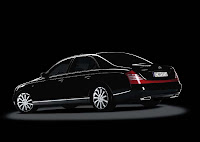- Suzuki Swift Rally Car, 2005
A redesigned Swift was announced at the Paris Auto Salon in September 2004. The Swift is intended to compete in the European B segment with the likes of Peugeot 206, Opel Corsa and the Fiat Punto. With 1.3 and 1.5 L engines, the new Swift is Suzuki's new "global car", to be produced in Hungary, India, Japan and by Chang'an in China. 3- and 5-door bodies are available.
The the new model is the first of its kind during which a Suzuki employed Indian engineers to design a car that would compete in the global market. The design of the new Swift was previewed on the Concept S and Concept S2 concept cars at auto shows, in the years leading up to its launch. It's proportions & essential shape are unmistakely like the BMW MINI, due to the blacked-out A-pillars and bumper-car stance. The exterior shape is described by some as "1.5 box".
Despite Suzuki's long-standing relationship with General Motors (which itself had prompted the development of the very first Swift), the new Swift is entirely Suzuki, and not based on the GM Gamma platform. The prestigious British Autocar magazine gave the new Swift a favourable 4/5 stars in road test, badging it a "thoroughly impressive all-rounder". Mk4 Swift has received a 4 stars out of 5 rating in the EURO NCAP crash tests.
The Standard equipment include leather steering wheel, dual air-bag, ABS with EBD (Electronic Brake-force Distribution), front disk brake with rear drum brake, sliding storage under passenger seat, single CD player.
Since its global launch in 2005, Mkq4 Swift recorded above forecast sales. In Japan, sales figure doubled forecast. Mk4 Swift enjoyed healthy sales in India where a substantial percentage of the car is built with locally made components. Rapid sales of the new Swift model contributed to the 64% rise in Q1 profits for the Maruti corporation. Waiting period in India for the car is at least 3 months.



















































